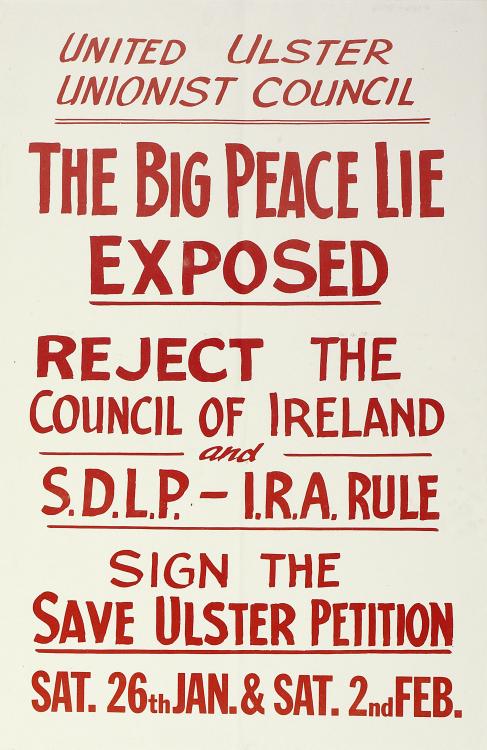Sunningdale Agreement
This political plan became known as the Sunningdale Agreement, named after the conference where it was negotiated in Sunningdale, England.
However, the proposal faced fierce opposition, especially from many unionists. They feared that including nationalists in the executive could be a step toward a united Ireland—something they strongly opposed. Additionally, they were resistant to the idea of the North-South Council of Ireland, which would involve cooperation between ministers from Northern Ireland and the Irish government, worrying that it might be a step towards a united Ireland.
This opposition culminated in the Ulster Workers' Council strike of 1974, when unionists, led by the Ulster Workers' Council, launched a massive strike that brought Northern Ireland to a standstill. The strike was aimed at collapsing the Sunningdale Agreement, and it worked.
The unrest and pressure it caused led to the eventual fall of the power-sharing executive, effectively ending the hopes for Sunningdale’s success.







